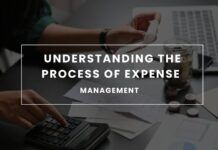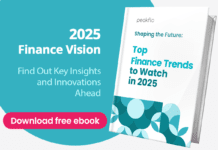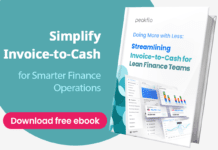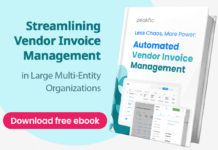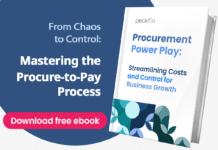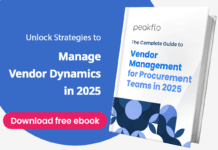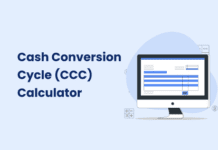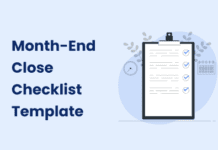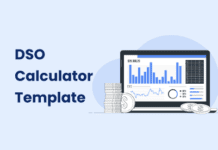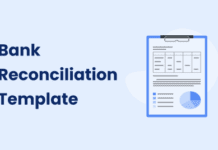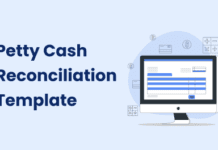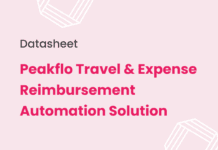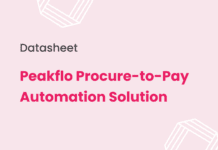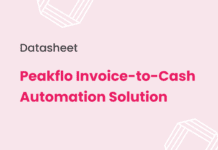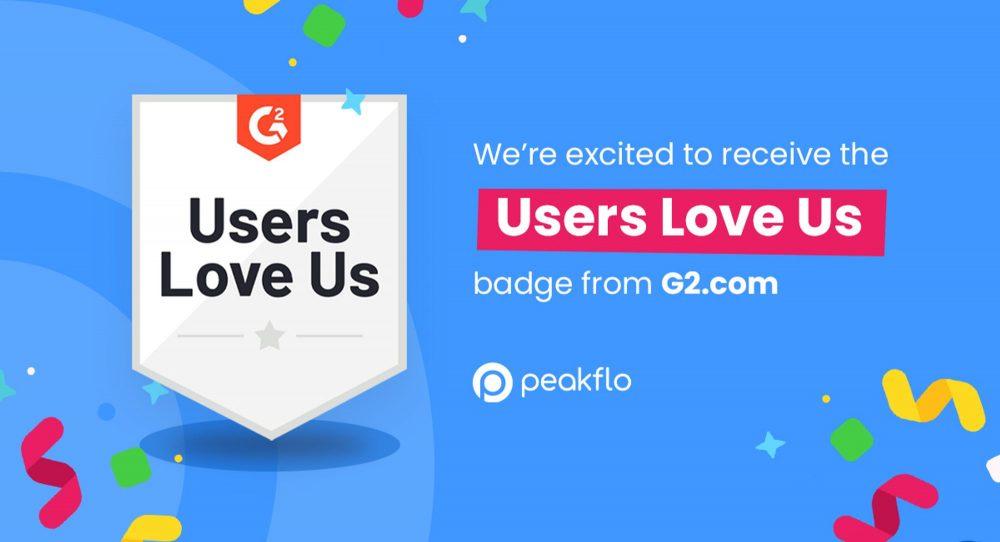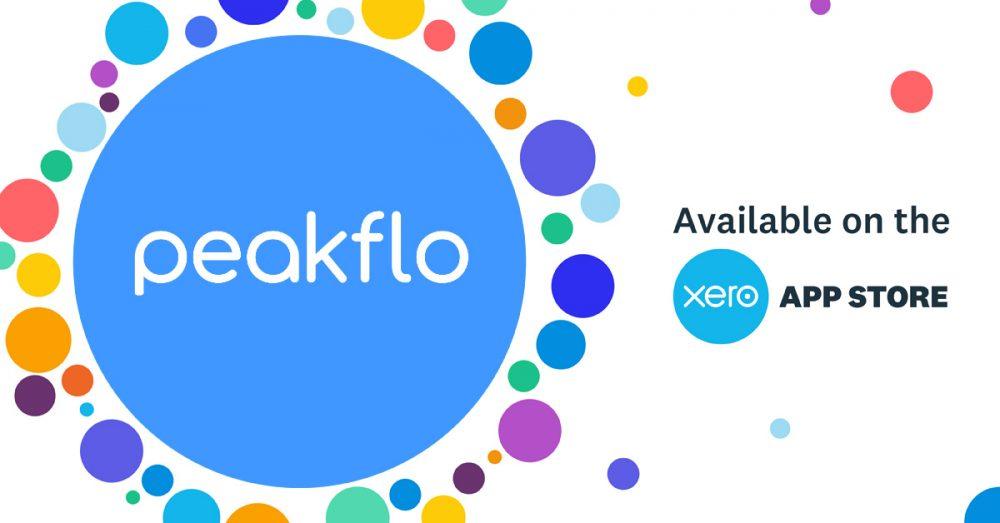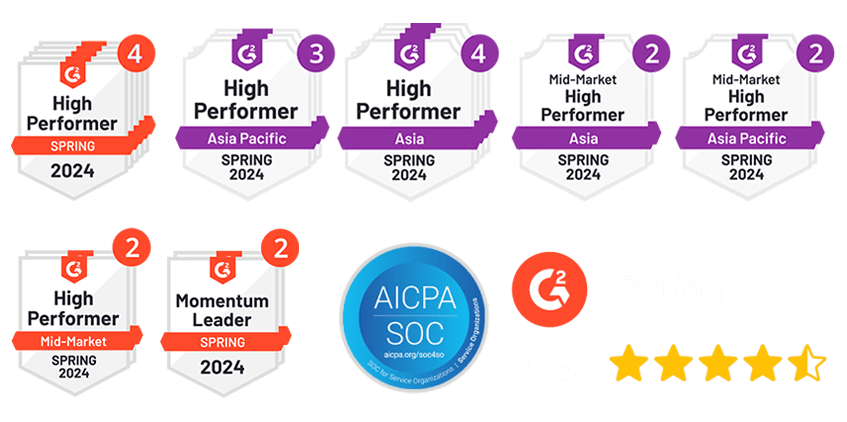Procurement teams face a growing challenge: manual processes that consume valuable time while limiting strategic impact. AI for procurement addresses these pain points head-on, with the generative AI market in this sector expected to grow from $174 million in 2024 to $2.26 billion by 2032. This rapid expansion reflects how artificial intelligence tackles complex procurement tasks—from spend analysis to supplier risk management.
The numbers tell a compelling story. Currently, 98% of companies have introduced AI into their workflows, and 100% of finance leaders report using some form of AI to cut costs and increase productivity. However, identifying which applications actually deliver measurable results remains challenging for many organizations. Best-in-class procurement teams are already using AI-driven tools to improve pre-approved spending to 96.1% and reduce risk management evaluation cycle time to just 30.1 business hours.
What works in procurement AI for 2025? This guide explores proven applications—from spend classification and contract lifecycle automation to supplier risk detection. You’ll discover how leading companies are increasing their pipeline of value creation initiatives by up to 200% and achieving an average 10% reduction in spend through AI-powered should-cost modeling. Whether you’re just starting with procurement AI or looking to optimize existing systems, this expert guide will help you understand the rapidly evolving landscape.
What is AI in Procurement and Why It Matters in 2025
Procurement teams face mounting challenges in 2025. They must balance traditional cost control with new demands like sustainability commitments, complex regulations, and supply scarcity. Artificial intelligence in procurement has emerged as the critical technology helping organizations navigate these challenges while transforming long-established processes.
AI in procurement refers to the use of advanced technologies to automate decision-making, eliminate repetitive tasks, and optimize outcomes across the procure-to-pay process. These systems enable machines or computer programs to mimic human intelligence for procurement tasks that were traditionally handled by people—from requesting supplier bids to analyzing costs—to complete these activities faster and with fewer errors.
The technology encompasses several key capabilities:
- Machine Learning (ML) that analyzes past transactions to classify spend, spot anomalies, and forecast trends
- Natural Language Processing (NLP) that reads contracts, extracts clauses, and flags non-compliance
- Robotic Process Automation (RPA) that executes rules-based tasks like invoice routing and PO generation
Why does procurement AI matter now?
The technology has moved beyond theoretical potential to deliver tangible results. According to Deloitte’s research, 92% of chief procurement officers have evaluated GenAI capabilities, with nearly 11% investing more than $1 million of their annual budgets on AI procurement tools. Additionally, 89% of executives across business functions say their organizations are advancing GenAI initiatives—a dramatic increase from just 16% in the previous year.
Organizations using AI for procurement are 2.3 times more likely to act on data in real-time rather than retrospectively. This shift from reactive to proactive procurement represents one of the technology’s most valuable contributions.
Many procurement departments operate reactively due to limited spending visibility across data silos and time-consuming manual processes. AI enhances visibility and enables smarter workflows, creating more time for strategic activities like spend analysis and financial forecasting. This allows procurement to transform from a back-office function into a strategic business partner.
The financial impact is equally compelling. PwC reports that companies using AI for sourcing achieve a 7-12% cost reduction annually. Meanwhile, KPMG research indicates AI can cut the time required to complete basic procurement tasks by up to 80%, with well over 50% of procurement labor capable of being automated to increase efficiency and reduce costs.
Benefits of artificial intelligence in procurement
- Real-time insights from massive datasets: AI helps make sense of procurement data, providing insights into supplier performance, contract leakage, and pricing trends. One commercial property developer reportedly collects procurement data 92% faster compared to manual methods, while a water treatment company uses AI to improve the accuracy of spend classification by more than 90%.
- Proactive risk assessment: AI continuously assesses supplier risk by monitoring news sentiment, financial filings, and compliance alerts, surfacing potential issues before contracts are signed. This capability is especially valuable in today’s volatile global markets, where supply chain disruptions can occur without warning.
- Enhanced decision-making: AI procurement software improves decision-making by combining multiple data points from various databases to create comprehensive opportunity heatmaps. Procurement decision-making becomes guided by AI and analytics applied to data pulled from numerous sources—such as general ledgers, purchase orders, and supplier transactions—faster than ever before.
The strategic importance of AI in procurement continues to grow, with 64% of procurement executives anticipating that GenAI will fundamentally change how their teams operate within the next five years. Moreover, 80% of global CPOs plan to deploy generative AI in some capacity over the next three years, with a near-term focus on spend analytics and contract management.
However, the implementation gap remains substantial. Despite widespread enthusiasm, only 36% of procurement organizations have meaningful generative AI implementations. This gap presents both a challenge and an opportunity for procurement leaders in 2025.
Organizations that adopt AI early will gain competitive advantages through superior insights, faster processes, and more strategic resource allocation. Those who delay implementation risk falling behind as competitors use AI to drive unprecedented value delivery.
Key Types of Procurement AI Technologies
Five distinct AI technologies are working together to address specific procurement challenges in 2025. Each technology serves unique functions within the procurement ecosystem, tackling problems that previously required extensive manual effort.
1. Machine Learning (ML)
Machine learning algorithms analyze historical data, market trends, and external factors to generate precise forecasts that drive better decisions. This technology excels at detecting patterns within massive datasets that human analysts might overlook.
ML-driven spend analytics tools categorize and analyze procurement spending data, uncovering valuable insights often hidden within extensive datasets. Spend classification uses several techniques:
- Supervised learning for training algorithms to find patterns in spending data
- Unsupervised learning for discovering new patterns in vendor relationships
- Reinforcement learning, where algorithms receive “rewards” for correct classifications
ML algorithms assess supplier performance by analyzing delivery times, quality metrics, and pricing history to provide comprehensive performance views. They also excel at risk detection by continuously monitoring diverse data sources, including news feeds, social media, and economic indicators.
2. Natural Language Processing (NLP)
NLP enables procurement AI systems to understand and interpret human language in both written and spoken forms. This technology addresses the challenge of managing unstructured data sources like contracts, emails, and supplier communications.
Contract management becomes more efficient as NLP extracts and categorizes key data such as terms, dates, and obligations. It also enhances supplier communications by translating documents and messages, minimizing language barriers with global suppliers. Another valuable application is perspective analysis, where NLP studies market changes to help teams anticipate fluctuations and adjust sourcing strategies accordingly.
According to a KPMG report, adopting AI shows an increase in spend management by 5-8%. This improvement stems partly from NLP’s ability to analyze free-form data from spend reports, purchase orders, and invoices to identify patterns and anomalies.
3. Robotic Process Automation (RPA)
Although not technically AI, RPA complements artificial intelligence in procurement by automating repetitive, rule-based tasks. This technology uses software bots to perform activities like filling out forms, generating reports, and processing transactions.
The financial impact is significant. An Everest Group study found that RPA in procurement can reduce costs by 35-65% for onshore operations and 10-30% for offshore operations. These savings come from automating transactional procure-to-pay processes and executing simple bidding transactions.
RPA bots can work continuously without breaks, ensuring uninterrupted performance year after year. They operate with consistent accuracy, minimizing human error while freeing employees to focus on strategic initiatives that require creativity and intelligence.
4. Generative AI (GenAI)
Generative AI has evolved from early exploration to a key driver of business acceleration. Nearly 89% of executives across business functions report advancing GenAI initiatives, up dramatically from 16% the previous year.
GenAI delivers measurable impact in four primary ways: generating content, enabling synthesis, augmenting engagement, and accelerating software programming. For procurement specifically, it automates document creation like RFPs and contracts, reducing manual work while improving quality.
One standout application involves GenAI combining keyword and capability-based searches with specific prompts to deliver superior supplier identification results, yielding three times the results of traditional search engines. Additionally, GenAI enhances negotiations by playing different roles to pressure-test strategies by examining arguments and counterarguments.
5. Optical Character Recognition (OCR)
OCR technology converts various document types (scanned paper, PDFs, images) into editable and searchable text. This streamlines the conversion of paper-based invoices and other documents into a digital format.
OCR technology improves accuracy while lowering the cost of e-procurement processes by reducing manual data entry. It also enhances tracking and management of procurement data through digitized invoices and documents.
Advanced OCR solutions employ artificial intelligence and machine learning to improve over time, recognizing various formats and styles of purchase orders and even learning to correct errors based on human feedback.
8 AI Use Cases That Actually Work in Procurement
Several AI applications have moved beyond hype to deliver tangible results in procurement operations. These proven use cases are helping organizations achieve measurable improvements in their purchasing processes.
1. Spend classification and analysis
Manual spend categorization can be a headache for procurement teams. AI has changed this by automating tedious data cleanup and categorization tasks that once consumed countless hours. Machine learning algorithms now process vast amounts of procurement data, identifying patterns and opportunities human analysts might miss. These systems can automatically categorize spend data, cross-reference purchase orders with invoices, and even pull missing supplier details from public sources. Companies report processing procurement data 92% faster compared to manual methods, while others improve spend classification accuracy by more than 90%.
2. Supplier risk detection
Traditional risk assessments provide point-in-time snapshots, but modern AI tools continuously monitor supplier risk across multiple dimensions simultaneously. These systems analyze billions of data points in real-time—including financial indicators, news sentiment, and geopolitical developments—to predict potential disruptions before they impact operations. AI algorithms can assess bankruptcy risk, evaluate performance metrics, and even analyze social media mentions about vendors to provide early warnings. This shift from reactive to proactive risk management gives procurement teams precious time to implement contingency plans.
3. Contract lifecycle automation
Contract management has been transformed by AI systems that can generate customized agreements, analyze clauses, and accelerate reviews. These tools automatically extract key terms, flag renewal dates, and identify consolidation opportunities across contract portfolios. By 2027, approximately 50% of organizations will support supplier contract negotiations through AI-enabled contract risk analysis and editing tools. Organizations report that AI-driven systems can accelerate contract review cycles by as much as 40% by optimizing terms and standardizing clauses.
4. Guided buying and sourcing
AI-powered guided buying simplifies purchasing while increasing policy compliance. These systems direct users to preferred suppliers and contract-compliant products through intuitive interfaces that make finding the right items easier. SAP Ariba’s guided buying capability uses machine learning to offer personalized item recommendations while automatically enforcing procurement policies. This approach helps organizations reduce maverick spending, with some companies reporting savings between 5-20% of total procurement costs.
Transform your procurement operations with Peakflo’s end-to-end procure-to-pay automation. Streamline essential processes, including approvals, supplier management, purchase order generation, and invoice matching, all within a single, integrated platform.
5. Invoice and PO processing
AI has dramatically improved invoice processing through automated data extraction and verification. Smart OCR technology captures invoice details while machine learning algorithms match them against purchase orders and receiving data. These systems automatically flag discrepancies, identify duplicate invoices, and even predict approvers, saving significant time while reducing errors. Peakflo’s AI invoice processing model can extract over 50 different fields from invoices, including line items, payment terms, and tax information.
6. Demand forecasting
Artificial intelligence excels at predicting future needs by analyzing historical data alongside external factors like weather patterns, social media trends, and economic indicators. This capability helps procurement teams optimize inventory levels, avoid stockouts, and strategically time purchases. Leading retailers now use AI to forecast regional demand trends for specific products, while e-commerce companies generate weekly predictions for each product in every size at each warehouse. According to McKinsey, 25% of companies already attribute more than 5% of EBIT to AI use cases such as demand planning.
7. Compliance monitoring
AI-powered compliance systems continuously monitor transactions against internal policies and external regulations. Using natural language processing and machine learning, these tools can detect anomalies, predict potential violations, and automatically update compliance frameworks as regulations change. Organizations report that AI helps them proactively identify and mitigate compliance issues before they escalate, reducing the time between detection and resolution.
8. Sustainability tracking
Environmental sustainability has become a critical procurement priority, with AI playing a pivotal role in tracking emissions across supply chains. AI systems calculate greenhouse gas emissions, identify carbon hotspots, and flag sustainability non-compliance in real-time. These platforms can also evaluate suppliers’ sustainability metrics, recommend greener alternatives, and simulate different supplier combinations to determine which mix yields the lowest environmental impact without compromising cost efficiency.
How AI Enhances Traditional Procurement Processes
Image Source: SlideBazaar
Traditional procurement processes can be a burden for finance teams. Manual workflows, scattered data, and reactive approaches often prevent procurement departments from becoming strategic business partners. Artificial intelligence addresses these operational challenges while reshaping how procurement teams operate, make decisions, and interact with suppliers.
1. From reactive to proactive decision-making
Procurement teams often find themselves putting out fires instead of preventing them. AI for procurement changes this dynamic by enabling teams to anticipate challenges before they impact operations.
AI systems continuously monitor supplier signals, identifying potential disruptions such as financial instability, regulatory changes, or shifts in supplier ownership. This early warning capability gives procurement professionals precious time to implement contingency plans rather than scrambling to manage crises.
The impact of this shift is substantial. Teams using AI in procurement are processing data 92% faster compared to manual methods, enabling real-time decision-making instead of retrospective analysis. Organizations report weighted average productivity improvements of 9.9% and effectiveness and quality improvements of 9.5%.
AI enhances decision quality by combining multiple data points from various databases to create comprehensive opportunity heatmaps. AI systems can analyze supplier EBIT margins, raw material indices, ERP spending data, supplier savings performance, and numerous other factors simultaneously to identify optimal sourcing strategies.
2. Reducing manual workload
Procurement teams often waste 65% of their time on manual tasks like data entry, chasing approvals, and correcting errors. Procurement AI dramatically reduces this burden by automating routine processes.
AI handles traditionally labor-intensive tasks such as purchase order generation, invoice processing, and approval workflows. Robotic Process Automation (RPA) automates data entry and matches invoices to POs for quick and accurate processing.
Enhance operational efficiency with Peakflo’s intelligent approval workflow automation. Implement flexible, rules-based routing that adapts to your organization’s unique approval requirements, eliminating bottlenecks and ensuring seamless decision-making.
The efficiency gains are remarkable. AI-powered procurement reduces headcount requirements to 70% of previous levels, freeing employees to focus on strategic activities that deliver greater value. Some organizations report improvements exceeding 25%, highlighting AI’s potential.
Artificial intelligence in procurement enables seamless automation of entire workflows—from requisitions to payments—reducing human intervention while increasing throughput. This automation extends to contract generation, supplier letters, and other communications, with some organizations reporting 85% time savings when writing supplier letters.
Improving supplier collaboration
AI procurement software changes how buyers and suppliers work together. AI-driven supplier intelligence consolidates internal, third-party, and industry-wide data to provide a 360° view of supplier performance, risk factors, and compliance metrics.
AI enables collaborative demand forecasting by providing predictive insights based on historical data, market trends, and real-time disruptions. One retailer shares AI-generated demand predictions with suppliers to align production schedules and inventory levels, creating more transparent and efficient supply chains.
AI automates routine supplier processes and communications, including onboarding, PO confirmation, delivery updates, and invoice processing. With fewer errors and faster processes between suppliers and buyers, suppliers can get paid faster and on time, fostering stronger relationships.
The technology also facilitates the integration of inventory data across systems, enabling agile responses to changing demands. By democratizing access to critical information through secure data-sharing platforms, AI builds stronger, trust-based partnerships between buyers and suppliers.
AI-powered portals serve as central hubs for exchanging information, managing transactions, and monitoring performance metrics. These platforms promote transparency by providing suppliers with access to real-time data, allowing them to manage their profiles, update lead times, and adjust capacities based on current information from the manufacturer’s systems.
Benefits of AI in Procurement in 2025
Organizations implementing AI for procurement are witnessing substantial, measurable benefits in 2025. Beyond theoretical potential, businesses now report concrete advantages across multiple dimensions of their operations.
1. Faster decision-making
The speed at which procurement teams can analyze data and act has increased dramatically with artificial intelligence in procurement. Teams using AI are 2.3 times more likely to act on data in real-time rather than retrospectively. In practical terms, this means processing procurement data 92% faster compared to manual methods.
AI systems continuously monitor multiple data sources simultaneously, enabling instant analysis that would overwhelm human teams. This capability transforms traditionally reactive procurement functions into proactive strategic partners. Consequently, requisition-to-order cycle times have improved to just 3.8 business hours for best-in-class organizations.
Furthermore, AI-powered analysis combines data from numerous sources—general ledgers, purchase orders, and supplier transactions—to provide comprehensive insights far more rapidly than traditional methods. This acceleration ultimately gives procurement professionals the information they need when it matters most.
2. Cost savings and efficiency
The financial impact of procurement AI is substantial and well-documented. Companies leveraging AI for sourcing achieve cost reductions of 7-12% annually. In fact, organizations implementing AI-powered procurement consistently report 10-20% cost reductions through smarter sourcing timing, volume planning, and elimination of procurement inefficiencies.
Efficiency gains are equally impressive. AI can cut the time required to complete basic procurement tasks by up to 80%, with over 50% of procurement labor capable of being automated. Following implementation, organizations report weighted average productivity improvements of 9.9% and effectiveness improvements of 9.5%.
As a result of these efficiency gains, AI-enabled procurement teams need fewer operational buyers and can shift focus to strategic activities. This reallocation of human resources creates ongoing value beyond the immediate cost reductions.
3. Risk mitigation and compliance
AI procurement software has fundamentally changed how organizations manage risk. Instead of point-in-time assessments, AI continuously monitors suppliers for potential issues—analyzing financial stability, delivery performance, compliance records, and even media mentions. This early warning system allows teams to implement contingency plans before disruptions occur.
The business impact is clear: risk management evaluation cycle time has decreased to just 30.1 business hours for leading organizations. Indeed, IBM reports that 80% of organizations now have part of their risk function dedicated to AI.
Additionally, AI strengthens compliance by automatically flagging potential issues, detecting anomalies in spending patterns, and ensuring adherence to both internal policies and external regulations.
4. Improved supplier relationships
AI in procurement enhances supplier collaboration in multiple ways. Through collaborative demand forecasting, both parties gain visibility into future needs, helping suppliers align production schedules with buyer requirements. AI-driven supplier intelligence provides a comprehensive 360° view of performance metrics, creating greater transparency.
Automated supplier processes—from onboarding to invoice processing—reduce errors and friction. With faster, more accurate processing, suppliers get paid on time, leading to stronger partnerships.
Furthermore, AI facilitates the integration of inventory data across systems, enabling buyers and suppliers to share information more effectively. This foundation of mutual transparency ultimately transforms transactional relationships into strategic partnerships.
Best Practices for Using AI in Procurement
Successful implementation of AI for procurement requires strategic planning rather than simply purchasing new technology. Through 2025, organizations that thrive with procurement AI are following these proven practices.
1. Start with clear goals
Define specific objectives for your AI in procurement initiative. Whether aiming to reduce procurement cycle times by 30%, lower maverick spend, or improve supplier diversity, your AI tools should align with measurable business outcomes. Leading procurement teams identify particular pain points—such as contract reviews or risk assessments—where AI can deliver immediate value.
Why does this matter? Without clear goals, AI implementations often become expensive experiments that fail to deliver concrete results. Focus on specific, measurable outcomes rather than broad automation aspirations.
2. Run pilot projects
Select a single, well-defined use case rather than attempting to transform all procurement processes simultaneously. Organizations that successfully scale analytics focus on five or six technical solutions chosen for their value potential. This approach allows you to test AI procurement software in a controlled environment, identify challenges, and make adjustments before expanding.
Here’s how to approach pilot projects:
1. Choose high-impact, low-complexity use cases first
2. Set clear success metrics before starting
3. Limit the scope to reduce variables
4. Document lessons learned for future rollouts
3. Ensure clean and structured data
AI models are only as good as the data they’re fed, making data quality upfront essential. Before implementation, evaluate your data readiness across availability, structure, accuracy, and completeness. While some advanced AI can work with incomplete data, poor-quality information typically leads to inaccurate insights and unreliable decision-making.
Data preparation often consumes 60-80% of AI project time, but this investment pays dividends through more accurate results and faster implementation.
4. Train and involve stakeholders
Drive adoption by understanding the needs and pain points of procurement professionals from day one. Provide training programs that help employees understand how AI tools enhance efficiency and improve decision-making. Organizations must invest in change management, communication, and AI fluency training for employees.
Successful training programs include:
- Hands-on workshops with real procurement scenarios
- Clear explanations of how AI supports rather than replaces human judgment
- Regular feedback sessions to address concerns and suggestions
5. Monitor and refine AI models
Continuous evaluation becomes critical for long-term success. Establish key metrics to gauge AI adoption and track progress against your initial roadmap. Leading organizations set up transformation offices that monitor solutions and raise flags when they underdeliver. This creates a feedback loop that helps procurement AI systems improve over time.
Regular monitoring prevents AI drift, where models become less accurate over time due to changing business conditions or data patterns. Schedule quarterly reviews to assess performance and make necessary adjustments.
How to Choose the Right AI Procurement Software
Selecting the right AI procurement software requires careful evaluation across several critical dimensions. Making the right choice in 2025 means focusing on these essential factors:
1. Look for domain expertise
Vendors with deep procurement-specific knowledge deliver superior results compared to general AI solutions. These specialized providers understand industry-specific challenges and have trained their algorithms on procurement data patterns. The most effective AI for procurement tools are built on established procurement best practices, providing the groundwork for efficient processes. Look for solutions developed by teams with extensive procurement backgrounds who understand your unique workflows.
2. Check integration capabilities
The value of procurement AI diminishes significantly if it can’t connect with your existing systems. Focus on providers offering:
- Seamless ERP integration capabilities
- Compatibility with your specific technology ecosystem
- Flexible API-based integration options
- Middleware partners for connecting newer AI platforms with legacy systems
Consider how the solution handles data synchronization between systems, as poor integration creates silos resulting in inefficiencies and data discrepancies.
3. Evaluate security and compliance
Since AI in procurement systems handles sensitive supplier and financial data, robust security is non-negotiable. Verify that potential solutions comply with relevant data protection regulations, including HIPAA, SOC 1, SOC 2, and FedRAMP Moderate certifications. Equally important, ensure the provider never shares or sells your data to third parties.
Reduce manual effort and improve accuracy in vendor statement reconciliation. Peakflo’s AI-powered solution automates the process, minimizing errors and freeing up valuable time for your accounts payable team.
4. Assess user experience and support
Technology adoption hinges on usability and support. Prioritize solutions with intuitive interfaces that encourage adoption across teams. The most successful implementations offer comprehensive training programs and use peer-to-peer learning to familiarize users with the technology. Clear communication about how artificial intelligence in procurement enhances rather than replaces employees’ capabilities drives acceptance.
Future Trends: What’s Next for AI in Procurement
AI for procurement continues to evolve rapidly, with emerging capabilities that will reshape how organizations approach purchasing and supply chain management. These developments move beyond current automation tools to create entirely new ways of operating.
1. Autonomous procurement systems
The next major step in procurement AI involves systems that can handle complete procurement cycles independently. These autonomous platforms will learn from every transaction, continuously improving their decision-making capabilities without human intervention.
Autonomous procurement systems will eventually:
- Initiate purchases automatically when inventory reaches predetermined thresholds
- Evaluate and select optimal suppliers based on real-time market conditions
- Negotiate pricing and terms by analyzing current market rates and supplier profiles
- Execute contracts without human intervention while maintaining compliance
This shift represents a fundamental change in procurement operations. Teams will move from executing transactions to managing strategic relationships and exception handling. The technology will handle routine decisions while escalating complex situations that require human judgment.
2. Digital twins for supply chains
What happens when you can test your supply chain before disruptions occur? Digital twins create virtual replicas of physical supply chains, allowing procurement teams to simulate countless scenarios simultaneously.
These sophisticated models enable organizations to visualize potential disruptions before they impact operations. Digital twins will incorporate increasingly complex data sets—from weather patterns to geopolitical events—creating more accurate predictive capabilities over time.
The technology allows for virtual stress-testing of supply chains against multiple scenarios. Organizations can identify vulnerabilities and optimize contingency plans proactively rather than reactively managing crises. This capability becomes especially valuable as global supply chains face increasing volatility.
3. AI-powered sustainability metrics
Environmental and social impact measurement will become a core AI capability in procurement. Advanced algorithms will track carbon footprints across entire supply chains with unprecedented precision, moving beyond simple reporting to provide actionable recommendations.
These systems will analyze alternatives and simulate environmental outcomes of different sourcing decisions. Rather than treating sustainability as a compliance burden, AI will help organizations identify opportunities to exceed minimum requirements while maintaining cost efficiency.
As environmental reporting regulations become more stringent worldwide, AI will automatically ensure compliance while identifying competitive advantages through superior sustainability performance. This approach transforms sustainability from a cost center into a strategic differentiator.
How will these trends affect your procurement operations? Organizations that prepare for these developments now will have significant advantages over those that wait. The shift toward autonomous systems, digital twins, and sophisticated sustainability tracking requires foundational changes in data management, process design, and team capabilities.
The future of procurement AI isn’t just about better tools—it’s about fundamentally different ways of working that require strategic planning and organizational change management.
Conclusion
AI has moved from a nice-to-have technology to an essential procurement tool. The evidence is clear: organizations implementing AI solutions achieve significant cost reductions while processing data faster than ever before. More importantly, these tools shift procurement from reactive operations to proactive strategic planning.
What makes the difference? The most successful procurement teams start with specific problems rather than attempting to solve everything at once. They focus on clean data, run targeted pilots, and scale based on measurable results. These teams understand that AI implementation requires strategic thinking, not just technology deployment.
The procurement landscape will continue evolving rapidly. Autonomous systems, digital twins, and advanced sustainability tracking are moving from experimental features to standard capabilities. Organizations that begin building AI expertise today will establish competitive advantages that become harder to replicate over time.
Your procurement team faces a choice: embrace AI proactively or risk falling behind as competitors gain efficiency advantages. The technology has proven its value across multiple use cases, from spend classification to supplier risk detection. The question isn’t whether AI will impact procurement—it’s how quickly you can implement solutions that deliver results.
Ready to get started? Try out Peakflo’s AI-powered procurement solutions to see how automation can streamline your procure-to-pay processes and reduce manual workload across your entire finance operations.
FAQs
Q1. How will AI transform procurement by 2025?
AI is expected to revolutionize procurement by enabling autonomous systems, creating digital supply chain twins, and providing advanced sustainability metrics. These technologies will allow for proactive decision-making, scenario planning, and more precise environmental impact tracking across the entire supply chain.
Q2. What are the key benefits of implementing AI in procurement?
The main benefits include faster decision-making, significant cost savings and efficiency improvements, enhanced risk mitigation and compliance, and improved supplier relationships. Organizations using AI in procurement report processing data 92% faster and achieve annual cost reductions of 7-12%.
Q3. Which AI technologies are most impactful in procurement?
The most impactful AI technologies in procurement include Machine Learning for spend analysis, Natural Language Processing for contract management, Robotic Process Automation for repetitive tasks, Generative AI for document creation, and Optical Character Recognition for digitizing paper-based documents.
Q4. How can organizations successfully implement AI in their procurement processes?
Successful AI implementation in procurement requires starting with clear goals, running pilot projects, ensuring clean and structured data, training stakeholders, and continuously monitoring and refining AI models. It’s crucial to align AI tools with measurable business outcomes and focus on specific use cases initially.
Q5. What should companies consider when choosing AI procurement software?
When selecting AI procurement software, companies should look for vendors with domain expertise, check integration capabilities with existing systems, evaluate security and compliance measures, and assess the user experience and support offered. It’s important to choose solutions that align with specific procurement needs and offer seamless integration with current technology ecosystems.

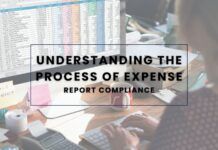







![Why AI Sales Calls Are Making Good Sales Reps Even Better [2025 Guide] ai sales calls](https://cdn-kmjmp.nitrocdn.com/YvtqmrsiHUxqerlSiZgbfzqqTARWTElr/assets/images/optimized/rev-834053b/blog.peakflo.co/wp-content/uploads/2025/09/65168cf6-3001-4733-8cbc-12d5684cf449-218x150.webp)




